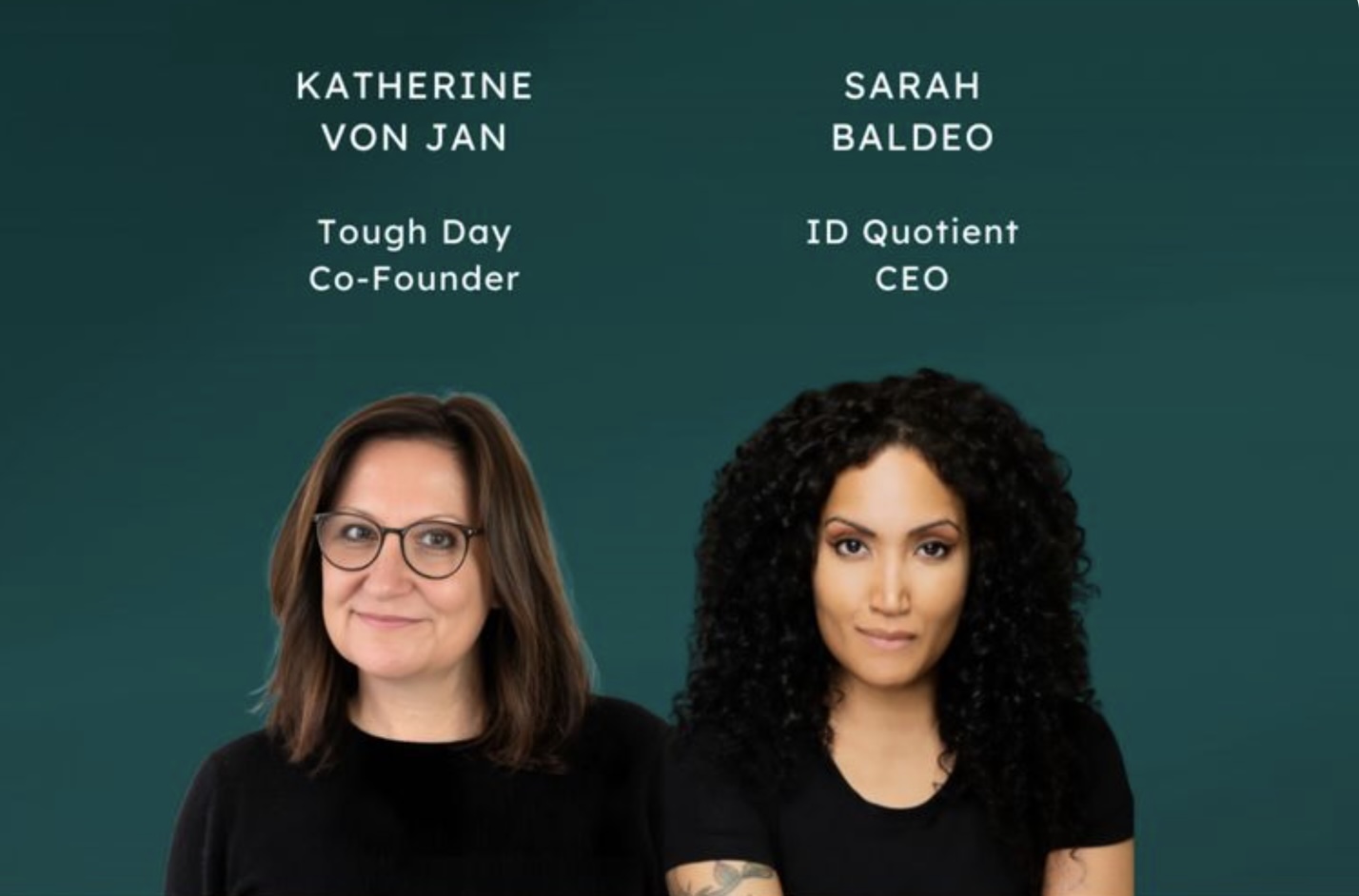How Great Leaders Turn Feedback into Fuel

TL;DR
Feedback shouldn’t be a once-a-year event. In high-performing cultures, feedback becomes oxygen, circulating naturally and fueling growth. When feedback becomes a habit instead of an event, people stop fearing it and start embracing and thriving because of it. Treat it as an everyday system that helps people do their best work. Start by lowering the social cost of honesty, then make feedback predictable with simple practices that establish habits. Guard against traps like when women are often selected to deliver constructive feedback because they are perceived as being more empathetic. Drawing on a recent Tough Day podcast conversation with Angelique Bellmer Krembs and Lori Marcus of The Band of Sisters, this post explores how to turn feedback moments into a culture that learns faster.
Great teams don’t wait for feedback, they run on it. When feedback is treated as fuel, trust grows, learning speeds up, and people do the best work of their careers. This article draws on a recent Tough Day podcast where Katherine von Jan, Tough Day co-founder and CEO, sat down with Angelique Bellmer Krembs (former Global Head of Brand at BlackRock, ex-CMO, board advisor) and Lori Marcus (executive coach, board director, former CMO at Keurig Green Mountain and Peloton) to talk about giving and receiving feedback. Bellmer Krembs and Marcus are both members of The Band of Sisters, a group of six executive-level women who have seen it all, from the bottom rung to the boardroom, and who advise companies on inclusive leadership and practical solutions that create cultures where everyone can thrive.
Why does feedback feel risky, and how do we de-risk it?
Too often feedback lands like judgment. On the podcast, Bellmer Krembs reminded us of the simple truth that “feedback is a gift” not a grade. The shift begins when we create a process and ensure feedback is fair, specific, and useful. That matters at two levels: the individual level, where clear, timely coaching accelerates growth, and the team level, where shared rituals around feedback create a steady loop of reflection, decision, and improvement.
Psychological safety is the condition that makes feedback possible because it lowers the social cost of telling the truth and asking for help. People need to believe that speaking honestly won’t backfire. Leaders create that safety with explicit norms and predictable practices — for example, agreeing that tough topics are welcomed, that we name behaviors not personalities, and that we will revisit progress together. Once the fear is lowered, the quality and candor of feedback rise, and both giving and receiving feedback become easier.
Before we ask for change, anchor people in what’s working. As Lori Marcus put it, “We want people not to be standing on quicksand. We want them to know where the strong dry land is for them, what they are really good at.” Naming strengths first stabilizes the ground for constructive feedback and makes the next steps easier to absorb.
“We want people not to be standing on quicksand. We want them to know where the strong dry land is for them, what they are really good at.”
— Lori Marcus
From feedback moments to feedback systems
If you want a team that runs on feedback, bake it into your culture and establish processes.
1. Make feedback routine, not random.
Borrow from the military’s After-Action Review model. After key meetings or launches, spend five minutes asking two questions: What worked? What would we do differently next time? Krembs and Marcus both described how “curbside debriefs” create rhythm and speed. You capture learning while it’s fresh and you normalize reflection and make it constructive instead of criticism.
2. Write it down.
Krembs shared a moment when verbal praise didn’t match written feedback on a review, an inconsistency that revealed unseen biases at play. Her lesson: get key feedback in writing. Written words clarify expectations and create accountability. As Marcus added, “Documentation isn’t bureaucracy, it’s memory.” Capture agreements and a date to revisit so feedback becomes a plan you can act on.
3. Use a consistent framework.
A shared structure keeps conversations anchored in facts rather than opinions. A helpful framework is Situation–Behavior–Impact (SBI) from the Center for Creative Leadership: identify the situation, describe the observable behavior, and state the impact. Use it for positive feedback as well as constructive feedback. Start with a quick strengths mirror (one concrete example of what’s working), then use the framework to discuss the behavior(s) to adjust. Whatever framework you choose, a common format makes feedback feel fair and specific, reinforces effective behaviors, reduces defensiveness, and makes next moves obvious. It also scales because everyone knows what a good feedback conversation sounds like.
4. Model curiosity.
Instead of saying, “You should,” start with questions: How did that feel to you? What might you try next time? Curiosity activates reflection and ownership. People are more receptive when they reach the insight themselves rather than when it is imposed.
5. Treat feedback as everyone’s job.
Krembs warns against having inner circles where feedback flows only between friends or favorites. To democratize learning and development across the team, create lightweight 360s or skip-level conversations that give everyone access. When feedback flows freely across levels, you get both better data and stronger understanding and deeper connection and trust.
Guard against the traps
Even with the best intentions, feedback can reinforce inequity if left to chance. The Band of Sisters use a helpful phrase here: “non-promotable work.” It refers to emotionally heavy, career-neutral tasks that often land on women, including delivering difficult feedback that others avoid. Research shows that women, across roles and industries, spend significantly more time on such non-promotable tasks. Leaders should track who gets asked to deliver tough messages and keep ownership with the accountable manager, rather than delegating to “the empathetic one.” Another trap is feedback that feels performative and not authentic. Krembs suggests ritualizing gratitude — try team shout-outs or “Thankful Thursdays.” Small, consistent habits build team culture.
In high-performing cultures, feedback becomes oxygen, circulating naturally and fueling growth. To get there, start small and stay consistent. When feedback becomes a habit instead of an event, people stop fearing it and start embracing and thriving because of it. Teams learn faster because learning is built in, not bolted on. And leaders build the kind of cultures that don’t just work, they grow.
Want to dive deeper into how to turn feedback into fuel ? Listen to our podcast with Angelique Bellmer Krembs and Lori Marcus.
Tuffy™ for Better Feedback
Tuffy empowers managers to make feedback clearer, more actionable, and seamlessly integrated into work routines. You can prompt Tuffy for support at key moments, or get proactive assistance from Tuffy based on observed needs. Here are 5 practical ways Tuffy can help:
- Feedback Prep: When prompted before a one-on-one or review discussion, Tuffy can guide managers in structuring feedback using a preferred framework ensuring comments are fair, specific, actionable, and consistently applied to all team members.
- Follow-Up Prompts: After feedback is delivered, Tuffy can send reminders to follow-up on agreed actions, keeping feedback loops productive and aligned with goals.
- Bias Alerts: Tuffy can help flag potential unconscious biases in phrasing and ensure feedback remains equitable and inclusive.
- Feedback Trends Tracker: When prompted to analyze team data, Tuffy can identify recurring strengths or gaps in performance, simplifying the process of aligning coaching efforts with areas for development. Tuffy can also synthesize 360 feedback and prepare a consolidated summary.
- Conversation Guides: Tuffy can suggest reflective questions or prompts, such as “What could you do differently next time?” to encourage curiosity and ownership, shifting feedback to a two-way dialogue.
Experience for yourself how Tuffy can help you think through and organize their ideas to get to more relevant, actionable and helpful feedback. Try Tuffy now.
About The Band of Sisters
The Band of Sisters is a group of six executive-level women who have seen it all, from the bottom rung to the boardroom. They advise companies on inclusive leadership and practical solutions that create cultures where everyone can thrive.



